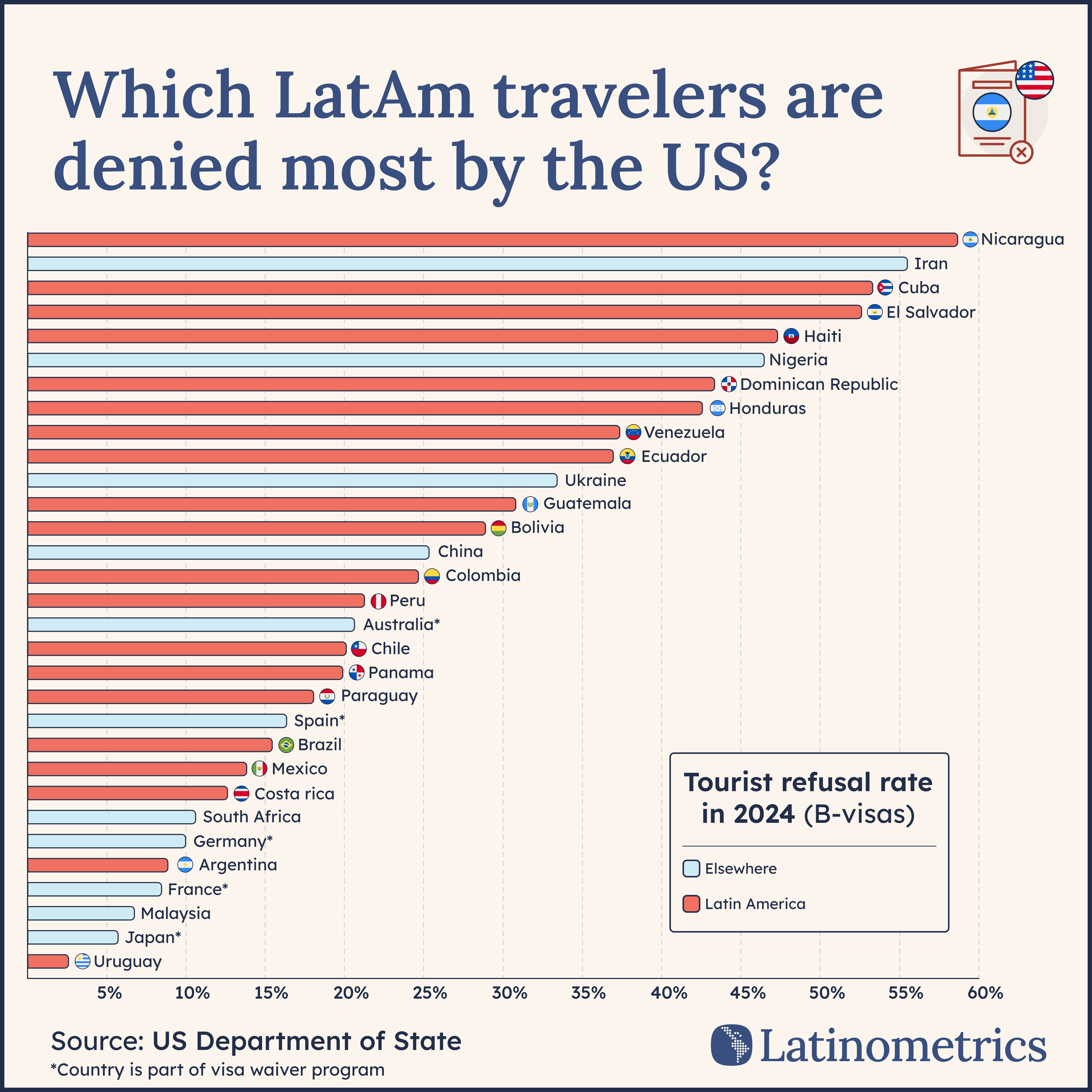
🌎 🛂 Which Latin American passport gets you into the US most easily? The answer might surprise you… let's explore ↓
The more things change, the more they stay the same.
This holds true even for Latin America’s relations with the United States, the region’s hemispheric neighbor and largest trade partner. While this year has brought a diplomatic rupture between Colombia and the US, or a politicized trade war between Brazil and the US, some components of the inter-American relationship remain consistent—particularly the central role played by migration and travel.
Led by Boston and Floridian hotspots like Miami and Orlando, the US remains the top destination for Brazilians traveling abroad for tourism. After Mexico, Brazil was the top recipient of visas for tourism and business in 2024 (although this is changing this year, more on that below).
Colombians and Argentinians are also among those likeliest to take their vacation time and head north to visit family or see theme parks.
But not everyone makes it in. Even before this year’s massive immigration crackdown, which has involved new social media checks and financial requirements for all visitors to the States, your chances of landing a tourist visa have long depended on your nationality.
A few things go into the calculus for the rejection rate. One is political relations and US mistrust of the home country (sorry, Cubans). Another is how likely US authorities deem it that you’ll return home—if your compatriots tend to overstay their visas, or your home country is going through a difficult time, this will hurt your chances.
It’s little wonder, then, that Uruguay, a small and stable country in Latin America, has a lower rejection rate than even highly developed countries like France and Japan.
But how do the numbers look like so far this year?
Source: FY23- State Department.pdf
Tools: Figma, Rawgraphs
by latinometrics

6 Comments
I didn’t expect Uruguay to be lowest on the ENTIRE list. Impressive.
Spain has to be because a lot of latin americans with such nationality (cubans, mexicans, venezuelans…) seek to inmigrate there.
But if a country is part of a visa-free agreement, how can the entrance in the country be forbidden?
Germany & Argentina being next to each other amuses me.
20% of Australians are denied a visa? Or do most get a waiver and this is 20% of those who for some reason need to apply for one?
What would be interesting to see is not just the rates (%) of visa travellers denied but absolute counts as well.
Seeing Uruguay have the lowest rate is one thing, but how many actual travellers are applying and being denied? My hypothesis is that the count of travellers is quite low when compared to other countries and that may play a factor in visa rates.
Maybe create a calculation where one is taking total travel count and combining with the denial rate to create a ratio?
Chile has a visa waiver program with the US, all of the tourist visas applied are longer than 90 days.